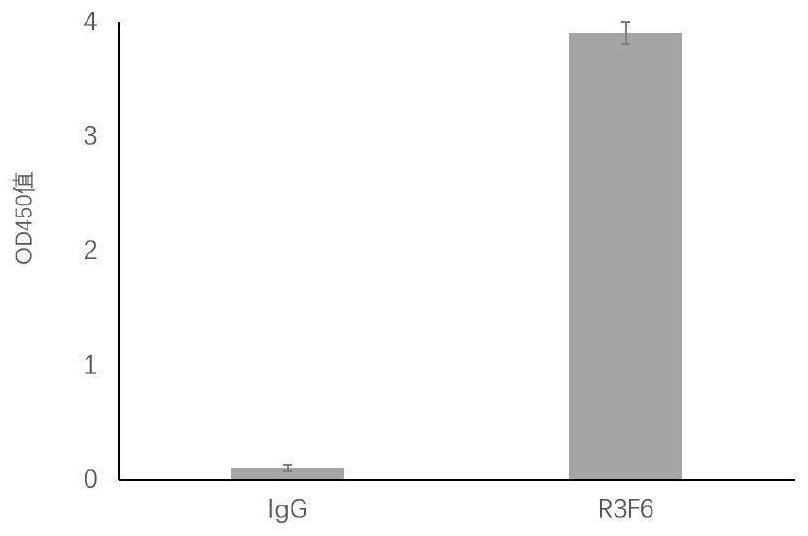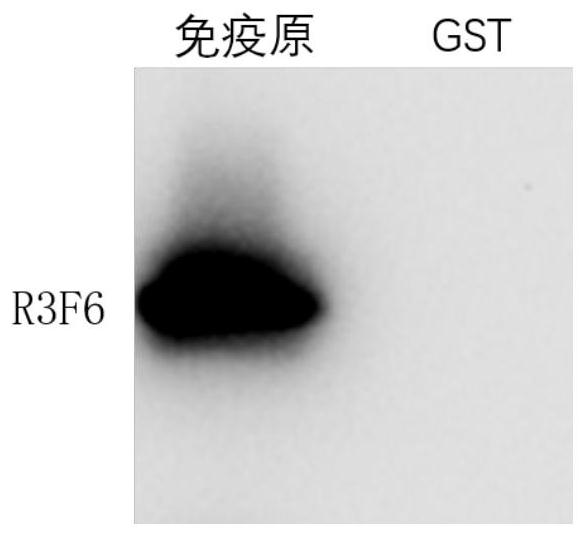Application of adipose-derived stem cells edited by gene editing technology to improvement of differentiation efficiency
A technology of fat stem cells and chondrocytes, applied in the field of fat stem cells edited by gene editing technology, can solve the problems of insufficient research, low efficiency of exogenous growth factors, short half-life, etc., and achieve good induction effect, good induction efficiency and application The effect of shortening the value and induction time
- Summary
- Abstract
- Description
- Claims
- Application Information
AI Technical Summary
Problems solved by technology
Method used
Image
Examples
Embodiment 1
[0022] Example 1 Preparation of adipose stem cells
[0023] Take 10 g of abdominal subcutaneous fat extracted by vacuum liposuction under sterile conditions, rinse it three times with PBS containing 500U / ml double antibody, remove the blood vessels and connective tissue visible to the naked eye, and cut it into pieces with ophthalmic scissors. , and then rinsed repeatedly with PBS to remove red blood cells as much as possible. Add 2 times the volume of 0.2% type I collagenase, shake and mix, and digest in a constant temperature water bath at 37°C for 60 min. Digestion was terminated by adding an equal volume of low-sugar DMEM medium containing 10% FBS. Centrifuge at 1800r / min for 10min. Discard the upper and middle layers, add 2ml complete medium (low sugar DMEM+10%FBS+100U / ml penicillin-streptomycin) to resuspend the cell pellet, filter with a 70μm cell mesh, adjust the cell concentration to 1×10 in the filtered filtrate 8 / L was inoculated into a 60mm cell culture dish at...
Embodiment 2
[0024] Example 2 Gene editing technology targeting miR-221
[0025] According to the precursor sequence of miR221, several sets of gRNA sequences were designed, and the optimal g4-RNA was obtained by screening as the experimental sequence. The specific gRNA sequence is shown in SEQ ID NO: 1, gRNA4: TGTAGATTTCTGTGTTCGTTAGG.
[0026] In Shanghai Sangong Company, the 5' end of the DNA sequence corresponding to gRNA4 was synthesized with the forward nucleotide sequence of CACC, and the 5' end of its complementary strand was added with the reverse nucleotide sequence of AAAC, respectively. The synthesized forward and reverse nucleotide sequences are denatured and annealed to obtain double-stranded DNA fragments. The specific experimental conditions are as follows: 1ul forward nucleotide sequence (100uM); 1ul reverse nucleotide sequence (100uM); 1ul 10×T4Ligation Buffer (NEB); 6.5ul ddH 2O; 0.5ulT4PNK(NEB). The reaction system was placed in a PCR machine, and the reaction conditi...
Embodiment 3
[0028] Example 3 Preparation of monoclonal antibodies targeting RUNX2
[0029] For the conserved region of RUNX2, the inventors screened and obtained antigenic epitopes with high immunogenicity, the specific sequences are as follows:
[0030] DENYSAELRNASAVMKNQVARFNDLRFVGRSGRGKSFTLTITVFTNPPQVATYHRAIKVTVDGPREPRRHRQKLDDSKPSLFSDRLSDLGRIPHPSMRVGVPPQNPRPSLNSAPSPFNPQGQSQITDPRQAQSSPPWSYDQSYPSYLSQMTSPSIHSTTPLSSTRGTGLPAITDVPRRISGASELGPFSDPRQFPSISSLTESRFSNPRMHYPATFTYTPPVTSGMSLGMSA
[0031] The antigen peptide synthesized with this sequence was used as the immunogen, and it was thoroughly mixed with an equal volume of Freund's complete adjuvant, and BALB / c mice were subcutaneously injected with 50 μg / mice of fusion protein at multiple points. Four weeks after the initial immunization, multiple subcutaneous injections on the back were given to boost the immunization, and 4 weeks later, the immunization was boosted again, with 50 μg of the immunogen per animal each time. Seven to ten days...
PUM
 Login to View More
Login to View More Abstract
Description
Claims
Application Information
 Login to View More
Login to View More - R&D Engineer
- R&D Manager
- IP Professional
- Industry Leading Data Capabilities
- Powerful AI technology
- Patent DNA Extraction
Browse by: Latest US Patents, China's latest patents, Technical Efficacy Thesaurus, Application Domain, Technology Topic, Popular Technical Reports.
© 2024 PatSnap. All rights reserved.Legal|Privacy policy|Modern Slavery Act Transparency Statement|Sitemap|About US| Contact US: help@patsnap.com










